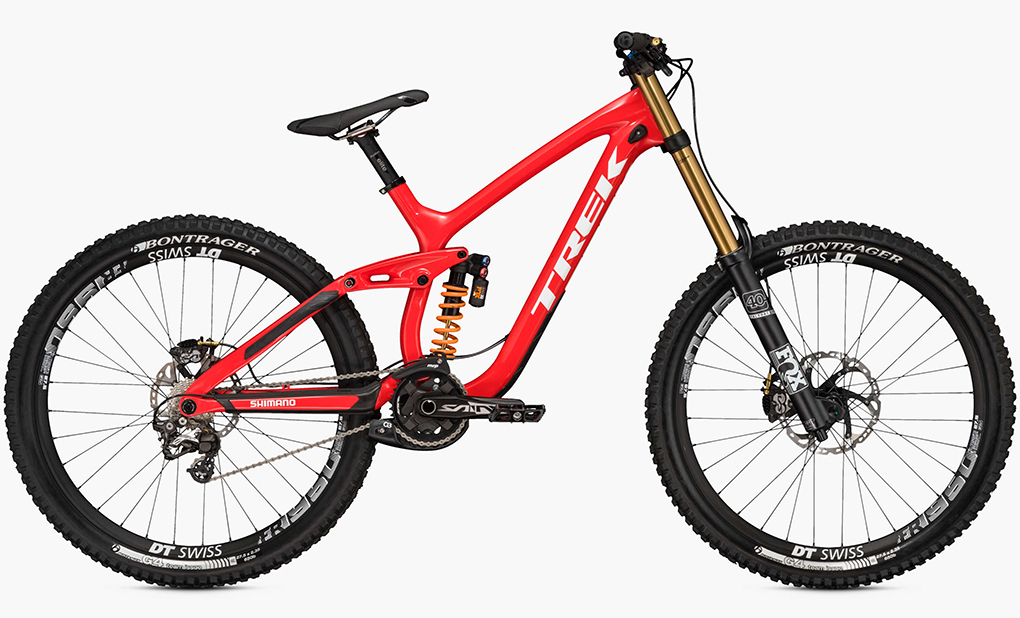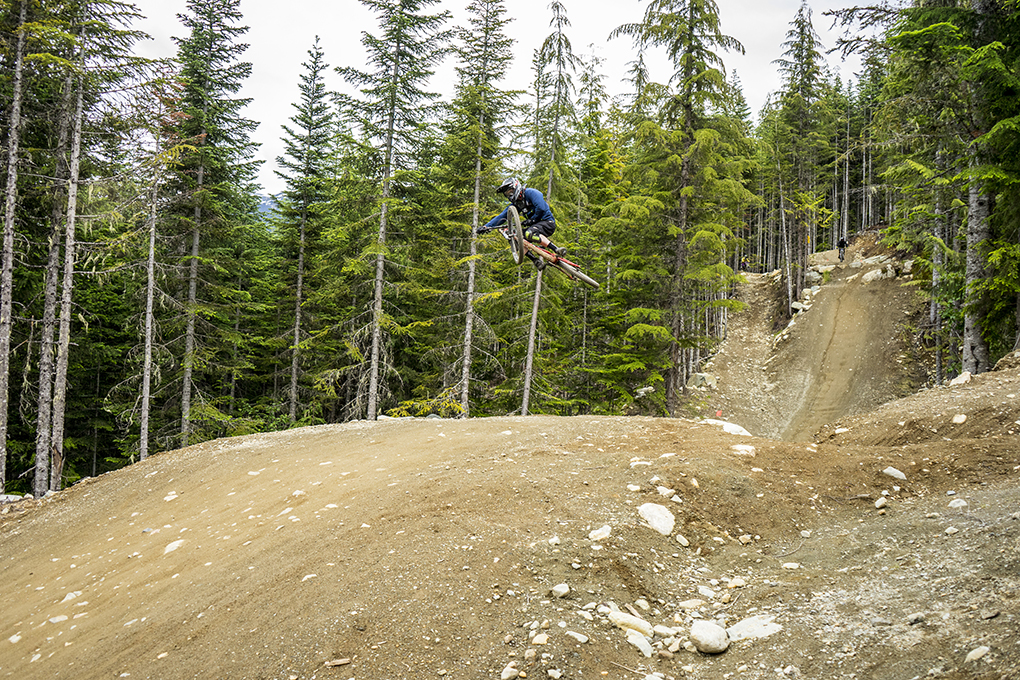2016 Trek Session 9.9
Size Tested: Large
Geometry: (Here)
Build Overview:
- Drivetrain: Shimano Saint
- Brakes: Shimano Saint
- Wheels: DT Swiss FR1950
- Fork: Fox Factory 40 FIT RC2
- Rear Shock: Fox DHX2 SLS
MSRP: $8,999
Wheels: 27.5′′
Travel: 203 mm Front, 210 mm Rear
Weight: 34.5 lbs, without pedals
Reviewer: 5’9”, 155 lbs.
Test Location: Whistler, BC
Test Duration: 2 Days

The Trek Session has been around for quite a while now, and while it’s seen some incremental changes, it’s still a pretty similar bike from years past. A couple years ago I spent a little time on the 2014 Session 9.9, but I rode a size Medium, which felt pretty small for me (even though I’m usually pretty comfortable on Medium sized bikes). This time around, I got on a size Large courtesy of Summit Sport in Whistler, and with a bit more room to move around on the bike, I came away thoroughly impressed.
The Build
The Session series has 3 different build levels: the 8, the 88, and the 9.9. The 8 and 88 both run on an aluminum frame, while the 9.9 bumps up to a carbon affair. While the 9.9 runs top-of-the-line componentry throughout, it also runs a top-of-the-line price tag. The 8 and 88 are much more modest, with the 8 in particular sporting a smart selection of parts to keep the price tag under $4,000. The 88 gets a more middle of the road spec, although it would be nice to see a more adjustable fork than the Boxxer RC on a bike that costs $4,999.
Looking at the Session 9.9, it’s tough to pick a highlight of the build spec because, with a couple relatively minor exceptions, it’s pretty dialed.
For starters, the suspension: a Fox Factory 40 out front, paired with a DHX2 (with an SLS spring) on the rear. I’ve been spending a lot of time on the 2017 Fox downhill offerings, and I’ll be putting together a full review of both the 40 and the DHX2 a little later this summer. In the meantime, it’s abundantly clear that these are some of the best dampers on the market.
The 40 is the torsionally stiffest fork I’ve ridden, and it’s super tunable. I’ve been fiddling with mine to adapt it to sketchy, blown-out bike park trails, flowy jump lines, and steep, root-infested awesomeness. In each situation, I can get the fork’s setting to match the situation well.
The DHX2 rear shock is similarly adjustable, and I find more of the adjustment range to be usable than on something like a Cane Creek Double Barrel. Like the 40, I’ve found that I can easily tweak the shock to work well in a wide variety of scenarios. Plus, the SLS spring is crazy light — on my scale, it’s almost half the weight of a traditional steel spring.

The drivetrain and brakes on the 9.9 are Saint throughout, which is fantastic. Saint brakes are a perennial favorite as some of the more powerful stoppers on the market, although as a side note, I did get some interesting vibrations coming from the rear end — which is something that Trek’s World Cup team has tried to address with harmonic dampers. The Saint drivetrain shifts smoothly, and more importantly, is far more reliable than the SRAM DH drivetrains.
The Session 9.9 rolls on DT Swiss FR1950 wheels, and while I can’t speak to that specific wheelset’s long-term durability, I’ve spent a lot of time on the DT Swiss FR 570 rim (which is used in the FR1950 wheelset). I’ve put a few decent dents in my rim, but all in all, it’s held up pretty well.
The rubber on the Session 9.9 that I rode was the Bontrager G5 tire, which is one of the best DH tires on the market, in my opinion. They run a bit bigger than the Maxxis options, they last a bit longer than a DHRII, and they’re in the same ballpark in terms of cornering and braking traction (which is to say, they have lots of both).
Rounding out the build spec are a few Bontrager parts which, for the most part, get the job done just fine. My only gripe here is the carbon Bontrager bar; for starters, I’d rather have an aluminum bar on a DH bike simply because the bike is more likely to get crashed and the carbon could get damaged. But perhaps more importantly, the stock bar width is only 750 mm, which is pretty narrow for a DH bike. Wide bars can be cut narrower, but narrow bars can’t be made wider.
NEXT: Frame Geometry and Fit, Features and Construction, Etc.
